- Product
-
-
Product Features
-
Explore More
-
-
- Solutions
-
-
By Industry
By Department
-
By Business Need
-
-
- Learn & Support
-
-
Product Education
-
Product Support
-
-
- Resources
-
-
Insights
Events
-
-
- Partners
-
AI-driven document management and process automation position Laserfiche highest for Product Features and Satisfaction.
Long Beach, California, Dec. 18, 2025 — Laserfiche — the leading SaaS provider of intelligent content management and business process automation — is a Leader in the Enterprise Content Management – Enterprise Data Quadrant Report from Info-Tech Research Group. With the most reviews of any vendor and a composite score of 9.1, Laserfiche was positioned highest for Product Features and Satisfaction.
“Laserfiche is honored to be recognized as a Leader in the ECM Data Quadrant at a moment when AI is transforming every aspect of how organizations create value from their data,” said Thomas Phelps IV, CIO and SVP of corporate strategy at Laserfiche. “We’re especially appreciative of the more than 400 reviews contributing to our +94 net emotional footprint and the 99% of users who indicate ‘they love the Laserfiche platform.’”
The Info-Tech Data Quadrant evaluates and ranks products, capabilities and features based on feedback from IT and business professionals. In another Info-Tech report, “Transform Efficiency, Productivity & Compliance Through ECM Implementation,” the advisory firm noted, “Laserfiche Cloud provides broad features that exceed the needs of modern organizations dealing with complex content management challenges.” Other highlights include:
“Laserfiche is a core platform across the Texas A&M University System, supporting everything from student systems to HR, accounts payable and facilities,” said Jeffrey Phillips, executive director of technology services at Texas A&M University. “The ability to configure and deploy automated workflows quickly has helped us accelerate time to value and improve the experience for students, faculty and staff across the university.”
“In an era where AI is reshaping the way we work and innovate, true success lies in partnership. Collaborating with a trusted content management vendor like Laserfiche gives leaders the clarity and confidence to turn innovation into impact,” says Andrea Malick, principal advisory director at Info-Tech Research Group. “This achievement as Leader reflects their commitment to empower organizations with secure, intelligent content solutions.”
For More Information
About Laserfiche
Laserfiche is a leading enterprise platform for document management and content-centric workflow automation. Through scalable workflows, forms, no-code templates and AI-enabled capture, the Laserfiche® platform accelerates how business gets done.
Laserfiche pioneered the paperless office with enterprise content management. Today, Laserfiche’s cloud-first development approach incorporates innovations in machine learning and AI to enable organizations globally to transform into digital businesses. Customers in every industry — including government, education, financial services, healthcare and manufacturing — use Laserfiche to boost productivity, scale their business and deliver digital-first customer experiences.
Laserfiche employees are committed to the company’s vision of empowering customers and inspiring people to reimagine how technology can transform lives.
Get started integrating with third-party APIs!
In Laserfiche, web requests allow you to call to third-party APIs to retrieve and send information as part of an automated process Many modern line of business applications, like Microsoft and AdobeSign, include RESTful APIs that you can leverage in Laserfiche to build automated integrations! With this hands-on course, you’ll get to make live API calls to a real third-party platform from Laserfiche. Join us to learn how to build your own integrations using web requests. In this course, you’ll learn how to:
This is an intermediate class! The audience is expected to have existing knowledge of Laserfiche Workflow although you do not need to be familiar with web requests or any coding to benefit from this course. To maximize class time for challenging concepts, this course will have pre-configured Laserfiche components, such as forms and workflows, and move quickly through basic concepts and interfaces, like configuring common activities in workflow.
While the Laserfiche training team is excited to educate on common use cases for web requests please note that individualized assistance with integrations will not be offered in this course.
The materials presented in this course are applicable to only Laserfiche self-hosted. Please check our events page for trainings regarding Laserfiche Cloud.
As public sector modernization becomes a mandate, cities must evolve their core government processes to meet rising citizen expectations for digital service. The City of Mount Pearl successfully answered this call with Laserfiche, transforming the way it handles information and manages citizen services. By implementing digital forms, automating manual workflows, and migrating to Laserfiche Cloud, the city has achieved significant gains in efficiency, data accuracy, and the quality of services delivered to its community.
The city’s initial adoption of Laserfiche focused on fulfilling regulatory requirements by digitizing records and applying retention schedules in the Laserfiche repository. However, the true transformation began when the city embraced workflow automation to replace error-prone, manual processes.
“A lot of our legacy processes were manual, using spreadsheets, manually typing in information,” said Bill Peddle, records and information management officer at the City of Mount Pearl. “One of my goals when I develop a process is to remove as much manual data entry as possible, because anyone will tell you that manual data entry is your biggest avenue for error.”
This focus on automation and error reduction has been applied across multiple departments, including HR, Finance, and Permitting:
“The biggest thing is at the end of the day is, it’s not data stuck on someone’s shared drive,” Peddle said, highlighting the importance Laserfiche’s ability to capture information and enforce consistent naming and folder structure, maintaining data integrity.

A major part of the city’s digital transformation strategy involves replacing all old PDF forms with online Laserfiche Forms. One major transformation included combining six separate PDF forms into one permit application. The city also modernized their municipal elections nominations processes, as well as updating their traffic calming and inspection forms processes, among others. This shift has directly improved the speed and quality of services for residents.
Legacy forms required citizens to download, print, fill out, and then manually scan or drop off the PDF forms. Now, residents can fill out digital forms on the city website, and the system ensures they are correct and complete before submission. By making fields mandatory, the forms capture the data staff need to begin processing an application immediately. “This cuts down on that back and forth that the person who’s receiving the form has to do,” Peddle said. “They used to have to call the submitter and say, hey, you didn’t supply this or that — this just took extra time that we don’t have in city government.”
An added benefit of the new Laserfiche Forms: accessibility to a wider range of citizens. The city is incorporating Google Translate via an API into its public-facing forms, allowing residents whose first language is not English to translate the form within the application. “They’re not having to go to someone to try to figure out what the form says, which I thought was an amazing capability,” Peddle added.
The city’s goal is not just to optimize form submission, but to build end-to-end automated processes: “We’ll continue to improve and streamline,” Peddle said. “We aren’t stopping at form submissions; we’re going to be processing all of those applications with less manual error and faster speed.”
After more than 10 years using Laserfiche, the City of Mount Pearl recently had to choose between continuing to self-host or move to Laserfiche Cloud. The decision was ultimately made simple by the compelling benefits of a fully managed environment.
“The cost of a new subscription was very similar to our current subscription,” Peddle explained. “The key thing is that we don’t have to maintain all these local servers. And we don’t have to maintain all the storage, which adds up in costs.” The move allows the city to stay current on software and security updates.
According to Peddle, the benefits of migrating to Laserfiche Cloud included:
Staff adoption of the new environment has been overwhelmingly positive. The cloud interface is centralized and streamlined. “Before we had a repository shortcut; we had a Forms shortcut — now we just have Laserfiche Cloud and it has everything in one place,” said Peddle. “The pickup and the adoption of it by staff has been great.”
The successful roll-out of processes in various departments has created an internal appetite for further automation across the city. “Once you meet with the department and you provide them one process, and they see how well it runs, they’re immediately asking, ‘What can we do next?’” Peddle said.
Ultimately, the most rewarding aspect of the entire project for the Peddle is the positive impact on city employees and residents.
“My favorite thing about Laserfiche is not the software itself; it’s the feedback that I get when a process is built, and users saying, ‘This makes my work life so much easier,’” he added. “At the end of the day, that’s the ultimate goal.”
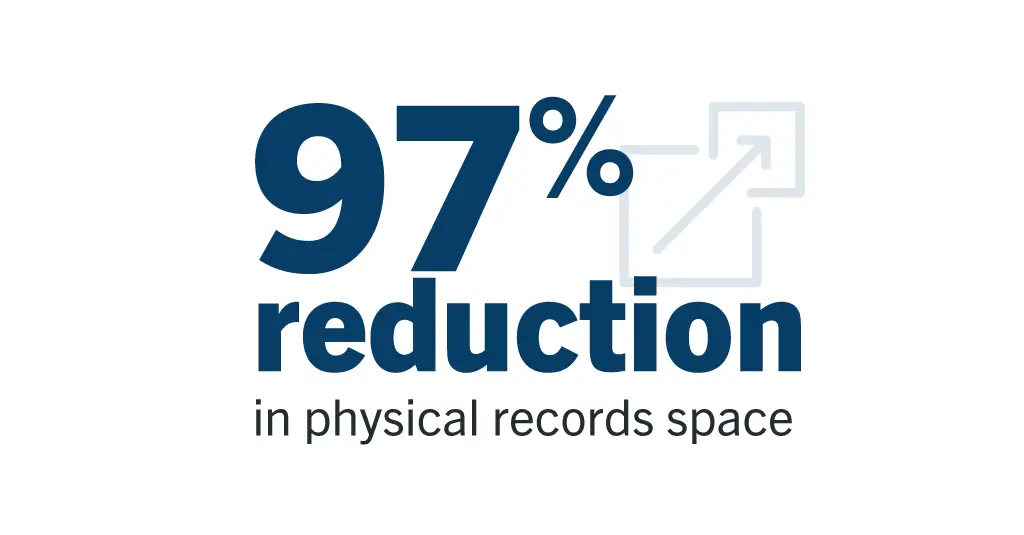
Records managers might think a 97% storage reduction is impossible. For Brian Mooney, IT director at the Louisiana Patient’s Compensation Fund (PCF), it was a matter of innovative thinking.
The PCF provides medical malpractice coverage for private practitioners and hospitals in the state. On top of this, the organization provides ongoing medical care for injured individuals in medical malpractice cases. With 60 employees, the PCF insures around 28,000 providers and oversees a yearly budget of $150 million.

Protecting providers and ensuring fair compensation for patients creates complex and wide-ranging recordkeeping needs. Manually managing critical and often sensitive information created a logistical headache. This perfect storm drove the team to seek a new solution in Laserfiche.
Today, the PCF uses Laserfiche for a variety of processes, including:
“We’ve always been very happy with Laserfiche and how easy it is to use and store documents,” said Mooney. “We were an early adopter of records retention schedules at a state agency. We’ve been a model for many other agencies looking to modernize their records management.”
At any given time, the PCF covers the medical bills for 50 to 100 patients. Additionally, the PCF may have 4,000 claims open simultaneously, which take an average of three to five years each to close. The sheer amount of paperwork related to these tasks made document storage untenable. File retrieval during audits could take days.
With approval from the Louisiana Secretary, the organization implemented an “imaging exception” that allows scanned documents to be retained digitally through Laserfiche. This system meets state guidelines for secure storage, backup and distribution, facilitating automated retention schedules and reducing physical storage needs by 97%.
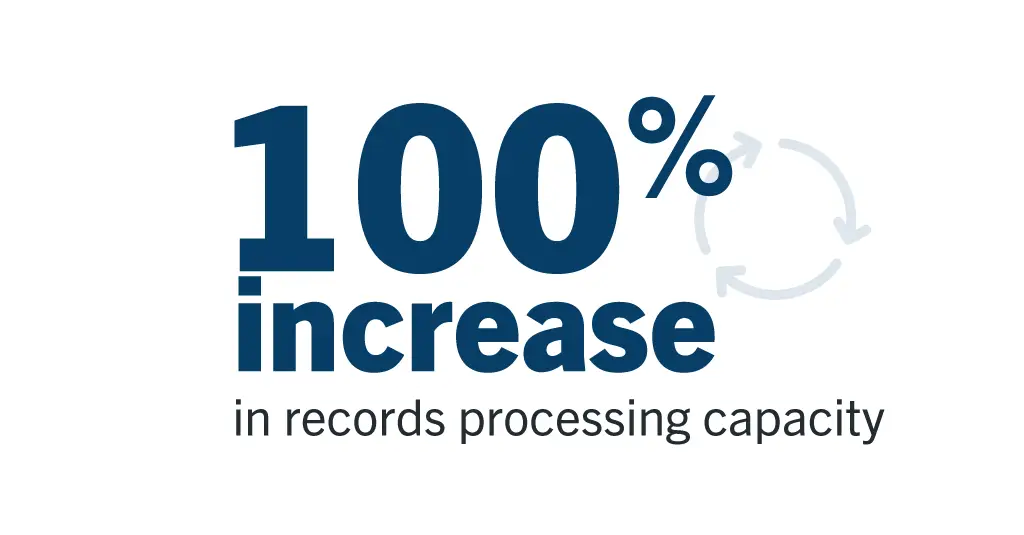
Today, staff can navigate the system and retrieve documentation promptly. What previously took days now takes minutes. The organization’s records processing capacity has also doubled. Staff can now process more than 700 claim, panel, and surcharge records per week. And with standardized records management practices, the organization has regained control over its information, mitigating risk of lost files or noncompliance.
The PCF serves both patients injured in medical malpractice cases and the doctors and providers involved in medical malpractice cases. In malpractice cases, the first step involves a medical review panel. The panel’s purpose is to evaluate the case and determine whether malpractice took place.
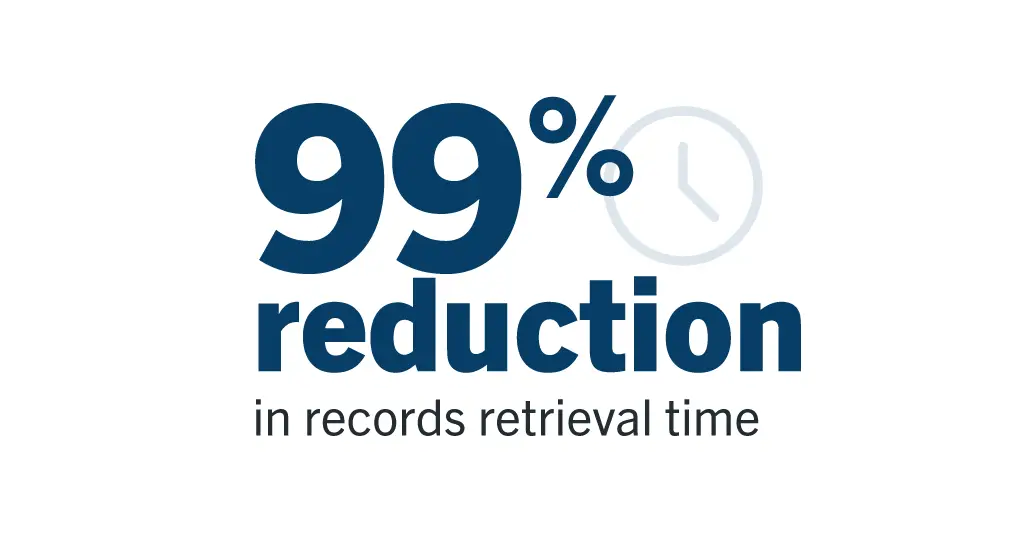
The PCF staff must retrieve records in a timely manner: Non-compliance with a strict three-day deadline means legal consequences and fees. Mooney and his team transformed this tedious, hours-long search for documents. With all information digitized and centralized in Laserfiche, staff can now easily search and retrieve the documents they need within minutes. This alleviated the stress of working on such a tight deadline and made the organization more responsive.
“We get lots of records requests, and with Laserfiche, the team is able to put them together much better and faster than we used to in the past,” said Mooney.
Laserfiche facilitates the flow of documentation for these panels. Robust security features help the organization maintain and track proper access to sensitive information.
Securing this information long-term is crucial, as malpractice claims panels can take an average of two years to complete.
Since implementing Laserfiche, the PCF has reduced errors, saved staff time and created peace of mind for meeting state-level requirements.
Recently, the PCF set out to further improve its records management. The team, facing high turnover and a growing number of complex documents, needed to quickly bring remaining staff up to speed on the project. PCF again turned to Laserfiche, this time integrating it with Canon IRIS to automate the manual steps associated with indexing employee information.
This project had three goals: Leverage experienced staff, reduce human error and reduce the learning curve for new hires. They started by training the Canon IRISPowerscan system to:
Laserfiche then automatically routes documents to their final Laserfiche folder destination once they are indexed, and triggers notifications for relevant staff.
This automated indexing workflow has vastly improved the PCF’s records management, reducing the risk for error and decreasing onboarding time for new hires. The PCF has also reclaimed staff time through Laserfiche’s scalability and ease of integration.
What started as a simple digitization project used by a handful of people has expanded to an interdepartmental initiative. Mooney and his team’s use of Laserfiche to double claim, panel, and surcharge records processing capacity has inspired new uses, with the transformation of the HR and accounting teams’ workflows on the horizon.
Additionally, Mooney is on the path toward using Laserfiche Forms to digitize and automate the surcharge form process, which would streamline the movement of documents into the PCF’s system and support $80 to $100 million worth of enrollments per year.
As the largest pension fund in Tanzania, the Public Service Social Security Fund (PSSSF) serves a vast membership base of nearly 700,000 individuals across the nation, supported by a staff of 1,000 and numerous financial partners. Formed from the merger of four distinct funds over the past seven years, the organization embarked on an ambitious mission: to become the country’s best provider of public sector pension services. This goal required a significant business reengineering effort, particularly to harmonize disparate systems and automate critical processes. PSSSF’s strategic investment in Laserfiche has proven to be a cornerstone of this transformation, fundamentally reshaping how they manage documents and deliver services.

Before adopting Laserfiche, PSSSF faced significant operational challenges stemming from its historical mergers and a reliance on manual, paper-based processes. Managing an immense volume of member documents was a constant struggle. “We had the challenges of searching documents during our processes, and storage occupied quite a big space. Security of the documents was also a challenge,” explained Erick Kato, director of information communication technology at PSSSF. This led to inefficiencies, delays, and a less-than-ideal experience for both staff and members.
The manual nature of operations meant that processing member benefits could be a lengthy ordeal. “Processing benefits could take up to 60 days in some cases,” Kato said. For members, this led to inconvenience and cost. “Some people used to travel more than 900 kilometers to visit our offices to submit documents or inquire about their benefits.” The organization recognized the need for a solution that could centralize records, streamline workflows and enhance accessibility.
The pension fund undertook a thorough evaluation of various systems before selecting Laserfiche. Their decision was driven by Laserfiche’s proven capabilities in enterprise content management, its user-friendly interface, and its robust capacity for document storage and rapid retrieval. “We found Laserfiche was quite easy to use,” Kato explained. “Laserfiche can also store quite a large number of documents and the searching capabilities, when compared with other systems, are very fast.”
Laserfiche was strategically implemented to become the digital backbone of their operations, with a primary focus on membership and benefit processing and payment. The solution enabled the fund to securely store, classify and easily access member records, which is paramount for a pension fund. “With Laserfiche, we can store members’ records in the way that we want them to be stored — we can classify the information and make it easier for our staff to process payments,” said Neema Kuwite, PSSSF director of finance.
Another key aspect of the solution was seamless integration. “We have integrated [Laserfiche] with our system which processes benefits to create an easy experience and eliminate the need for switching applications,” Kato said. Laserfiche integration extends to other critical business areas, including contract management and procurement, creating a unified digital environment. “These integrations have streamlined processes because you don’t have to move from one system to another. For example, from within our benefit processing system, an employee can access member documents from Laserfiche, which can be checked, processed and routed. Processing becomes very fast and easy.”
Furthermore, Laserfiche supports the fund’s broader automation agenda. “We’re looking forward to having Laserfiche support us in other administrative chains,” said PSSSF CEO Abdul-Razaq Badru. “It will help us implement the full automation program that we are embarking on, which includes connecting internal systems and integrating with larger databases to boost overall efficiency.”
The adoption of Laserfiche has delivered transformative results across the organization, validating PSSF’s investment. These include:
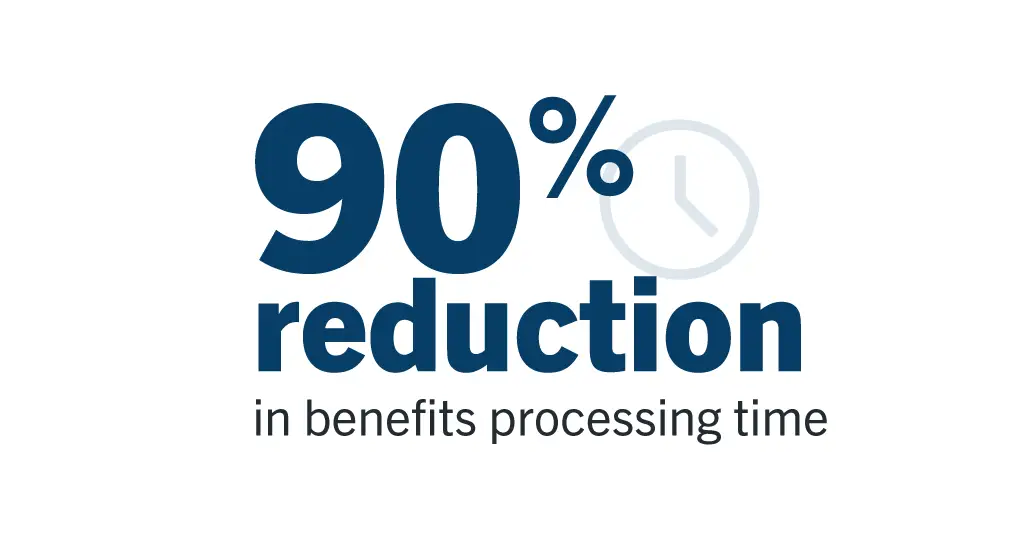
Dramatic time savings: The most significant impact has been on benefit processing times. “Processing benefits used to take up to 60 days, but now it takes about 3 to 5,” said Kato. This 90%-plus reduction in processing time has fundamentally improved service delivery.
Cost savings: Both the organization and its members have realized substantial cost benefits. “We save time and we save people the headache of having to be in the records office looking for documents,” said Kuwite. The shift from paper to digital has also freed up valuable physical space. “Laserfiche has helped us to reduce the space we used to keep those records on paper. We can now use the space to hire more people or rent out to others who need office space. It’s really given us a return on investment.” For members, the ability to apply for benefits online means they don’t have to travel, saving them time and money.
Enhanced customer satisfaction: The ability to process payments quickly and provide online access to records has significantly boosted member satisfaction. “With our members, Laserfiche provides increased customer satisfaction by shortening the time it takes to process benefits,” added Kuwite. A customer survey confirmed this, with results showing members are “so comfortable and happy with our services, and the fact that we can pay them in a timely manner. Laserfiche has played a big role in that.”
Strategic and cultural transformation: Laserfiche has become one of PSSSF’s two core systems, alongside the organization’s ERP. “Laserfiche is going to help us achieve our aim of becoming a fully automated enterprise,” Badru explained. The platform is also fostering a culture of technology-driven, evidence-based decision-making. “It is actually pushing us also to think of how we can take advantage of our existing database and use the data for decision making in the future.”
By strategically implementing Laserfiche, this leading pension fund has successfully navigated the complexities of merging legacy systems and transforming into a highly efficient, member-centric organization. The dramatic reduction in benefit processing times, coupled with significant cost savings and enhanced member satisfaction, underscores Laserfiche’s pivotal role. “Laserfiche solves all your problems in processing, especially if you have significant amounts of manual processes or you’re a semi-automated organization,” said Badru. “Laserfiche takes care of all those manual troubles you have.” Looking ahead, the organization is excited about further integration with AI tools, anticipating an even brighter, more automated future.
As one of Mexico’s leading insurance companies specializing in property, casualty and civil liability insurance, GMX Seguros has prioritized operational excellence and customer experience. Facing the perennial challenges of paper-intensive processes, escalating compliance demands, and the critical need for rapid claims resolution, the insurer sought to replace a legacy document management system with a more robust solution.

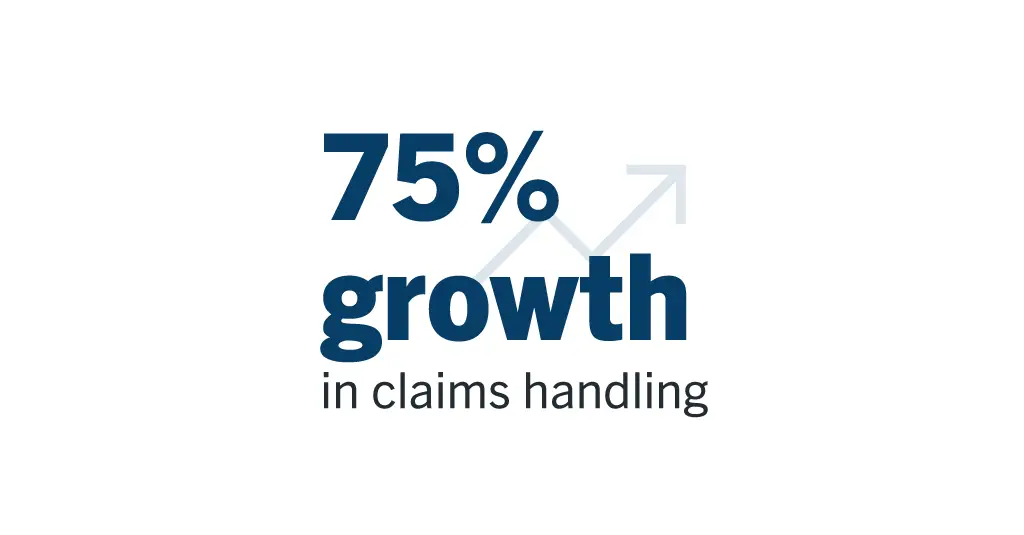
The insurer found a solution in Laserfiche, embarking on a journey that has dramatically streamlined operations, cut processing times, and fortified GMX’s position as a market leader. Through the organization’s automation initiatives, the insurer achieved an impressive 75% growth in claims handling capacity and a 20-30% increase in other business areas.
Before adopting Laserfiche, the GMX grappled with a complex web of manual processes and physical documentation. Policy issuance, regulatory compliance and claims handling were bottlenecks that hindered efficiency and customer satisfaction.
“We were generating a lot of paper in different ways,” said Oscar Salgado, CIO at GMX Seguros, describing the sheer volume of paper as about the size of a two-bedroom apartment. This physical footprint wasn’t just about space; it translated into slow, laborious workflows. The claims process, a cornerstone of customer trust, was particularly impacted.
“Claims processing used to take more than 15 days,” Salgado said. Longer timelines in claims processing, however, test customer patience in their time of need.
Beyond operational inefficiencies, the company faced stringent regulatory requirements, such as those from the Comision de Seguros, demanding meticulous collection and secure storage of sensitive customer documents (IDs, proofs of address, financial statements) to comply with anti-money laundering regulations. Managing these crucial personal documents across disparate systems was a significant hurdle.
The insurer began implementing Laserfiche with a focus on policy management, digitally archiving all issued policies and integrating them with a customer portal for easy download. This initial success paved the way for more expansive applications.
A key area of transformation was regulatory compliance. “We need to collect IDs, address, proofs of address, statements — all these documents are personal and sensitive data,” Salgado said. “We store them in Laserfiche, and this helps us organize all the documents within our customer folders.” The centralized, secure repository became indispensable for managing sensitive data and demonstrating compliance.
The most significant impact, however, was felt in claims. The company developed a digital claims solution, which collects all necessary documents from customer and automatically builds a digital file. The GMX team built an integration between Laserfiche and the company’s claims system via Laserfiche API which links every claim document to its corresponding policy and customer file, creating a comprehensive digital record.
The insurer’s use of Laserfiche extends to other departments and critical processes including:
The implementation of Laserfiche yielded immediate and profound benefits, most notably in time savings and operational efficiency.
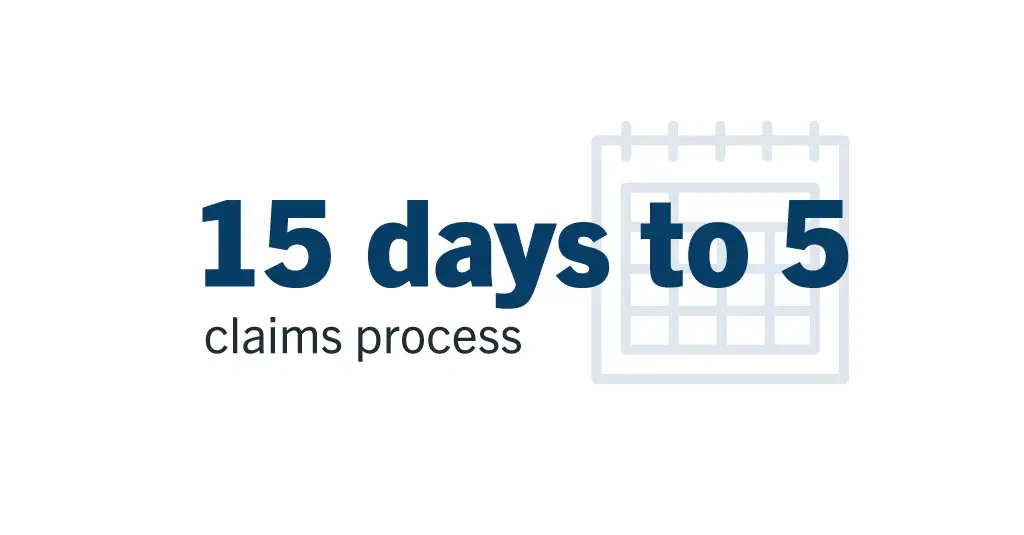
“The time that we are saving is tremendous,” Salgado explained. The most striking improvement was in claims processing: “Claims that used to take more than 15 days now less than five. In some cases, we can process a claim within the same day.”
This strategic advantage became especially evident during a crisis, when GMX experienced an influx of claims in a short period of time. In 2023, Hurricane Otis made landfall near Acapulco and became the costliest tropical cyclone to strike Mexico on record.
“We had the best turnaround time for claims related to Hurricane Otis,” Salgado said. While competitors struggled to process claims for months, the GMX Seguros’ Laserfiche-powered processes allowed the insurer to pay customers in less than a month. “With this efficiency, we can process more claims in less time.” This increased capacity, he added, amounts to 75% growth in claims handling.
Handling 50,000 – 60,000 claims per year and issuing more than 300 policies per day, GMX employees use Laserfiche on a daily basis to support critical service delivery. Beyond claims, the insurer has experienced 20% – 30% growth in other business areas.
GMX has also implemented Laserfiche to increase efficiency in:
The importance of the company’s standardized document management and automated processes is further magnified by audits, which are done internally as well as by regulatory entities. “We use Laserfiche to review and compile all documentation needed for audits, which used to be a very time consuming process,” Salgado said.
The paper reduction has also liberated valuable physical resources, freeing up office space and allowing for better utilization of facilities.
GMX Seguros has not only automated critical processes like claims, compliance, and policy management but has also built a resilient, highly efficient digital ecosystem. The ability to dramatically reduce claims processing times has translated directly into enhanced customer satisfaction, particularly when responding to high-volume events like natural disasters.
“We have some of the best response times in Mexico,” Salgado said. “Laserfiche is not just a document storage system for us. It’s a competitive advantage.”

Imagine a 25% increase in net revenue over five years without adding additional staff. Airline Hydraulics — a distributor of industrial technologies for a broad range of markets — made this a reality using Laserfiche.
Managing data associated with Airline Hydraulics’ myriad products and custom-engineered technology solutions requires robust information handling processes and procedures. However, with information coming from many sources — suppliers, customers, sales and other departments — the organization needed a way to standardize data collection and dissemination.
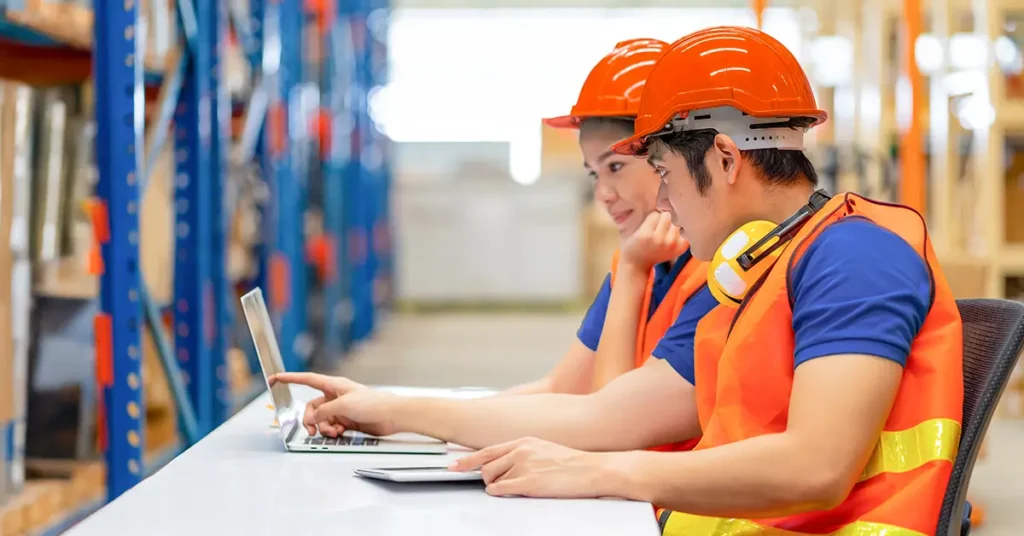
Driven to better manage the company’s data to optimize operations, the team implemented Laserfiche.
“Laserfiche was a solution that gave us the best of both worlds: the forms and workflow processes as well as the data integration,” said Todd Schnirel, CTO and director of business development and agility. “We’re now able to record and mine that data for trends and outliers — the potential that Laserfiche unlocked with our data was really the differentiator for us.”
The company has since reduced the time and effort wasted on outdated processes, using Laserfiche to:
“We’re a 100% employee-owned company, so everyone has a stake in organizational efficiency,” said Schnirel. “If you add 25% to the top line and add very little to your operating expense, the money goes right into the profitability of the organization. And for us, that gets distributed amongst the employees.”
Airline Hydraulics’ business dates back to 1949, when the company focused on equipment used in conjunction with factory air lines. Since then, the company has grown in size and in offerings. With this growth, the organization has had to scale operations, which proved challenging without standardized business processes. Information about requests was trapped in PDF documents that bounced back and forth via email and had to be manually typed into the ERP system. This manual approach led to inaccurate data; every employee’s unique method for recording data led to inconsistencies.
“If you’ve got 20 different people they might have 10 different ways to do something,” said Schnirel. “The person who’s then on the receiving end has to deal with all those differentiators.”
The company’s ERP system, Epicor, also lacked the right automation, analytics and data validation tools that would support more standardized data collection. Teams like business development or accounting couldn’t take quick action on requests from sales, customers and suppliers when they received incomplete or inaccurate data. To create more consistency in processes, the team now uses Laserfiche Forms and workflow.
For example, they created a new vendor management form, critical for managing data about the organization’s hundreds of approved suppliers. Previously a very manual process, vendor management often required the accounting team to follow up with requestors to collect W-9s and other information. Misspellings and “bad data” being entered in Epicor was commonplace.
“Laserfiche allows us to do data validation, and we can flush out inaccuracies before we put bad data into our ERP system. Laserfiche definitely helps to keep our Epicor database clean.”
Todd Schnirel, CTO and director of business development and agility
Additionally, the team can now enforce certain procedures — such as collection of vendor W-9s — by not allowing a form to be submitted without the necessary documentation. Laserfiche’s integration with Epicor facilitates the data entry process, avoiding duplicate manual entry. “If we can make a task 10 minutes faster, and we continuously do this, we are making processes faster by hours over time,” added Schnirel. “So that’s our approach. It really starts to add up.” In addition to time savings, the organization avoided replacing their ERP system, saving around $2.5 million in initial costs.
Without application switching or excessive data entry, staff can now focus on higher-value tasks. There are fewer manual errors and less stress around data accuracy. The new solution has also opened the door to more analysis of manual tasks and process optimization.

Airline Hydraulics’ return material authorization process (RMA) is a prime example of how the team used Laserfiche to automate a complex process. Prior to Laserfiche, RMAs relied on multiple manual steps, and often resulted in inaccurate records.
“The RMA process was many, many emails through many different people, and there was no trackability,” said Jennifer McCalicher, product data team manager at Airline Hydraulics. McCalicher and her team spent hours hunting down information that should have been provided with the initial request.
The business development team streamlined the RMA process, again with Laserfiche Forms and workflow.
The new process introduced:
Laserfiche also automatically creates associated Epicor records upon RMA approval, as well as a packing list.
The organization has since reduced the time to complete this process from more than a month to less than a week.

RMA process optimization resulted in:
Beyond the RMA process, the organization implemented a similar solution for special pricing agreements (SPAs).
“Originally this would go into a ticket system,” said McCalicher. “Someone would then have to review the documentation and get it into our ERP system.”
The team replaced this ticket system with a one-stop form that makes it easy for on-the-go salespeople to get pricing approved quickly and secure orders faster. Data is pulled directly from Epicor to make it easier for salespeople to properly fill out required fields. Workflow routes agreements to the pricing department for approval, giving the organization more control over pricing strategy. Finally, more accurate data in Epicor means better financial reporting and easier audits.
With the business development team’s achievements with internal processes, they are now looking to expand Laserfiche to customer-facing processes. Schnirel expects to see more improvements in efficiency organization-wide. With Laserfiche’s low-code automation tools, the company’s business users can build most of these processes with ease, even without deep technical or coding skills.
“Our team is not made up of developers; they’re not programmers; but they’re able to create all this because of the tool set that exists within Laserfiche,” said Schnirel. “This was a huge differentiator for Laserfiche, this workflow ability and having the whole gamut of programmability from HTTP requests and JSON creators and VB scripting and all the different kind of advanced stuff you can do, but in a very visual, very low-code way.”
Internally, the team has seen a culture of automation and optimization spreading throughout the company. “As we’ve deployed it departmentally, it’s picking up a lot of momentum,” said Schnirel. “We’re getting that snowball rolling down the hill effect. We’re constantly receiving requests for new forms and new processes.”
“At Airline, we look at processes through the lens of, ‘How can we do that more efficiently, so it can benefit all of us?’” said McCalicher. “The amount we can do within these workflows is amazing.”